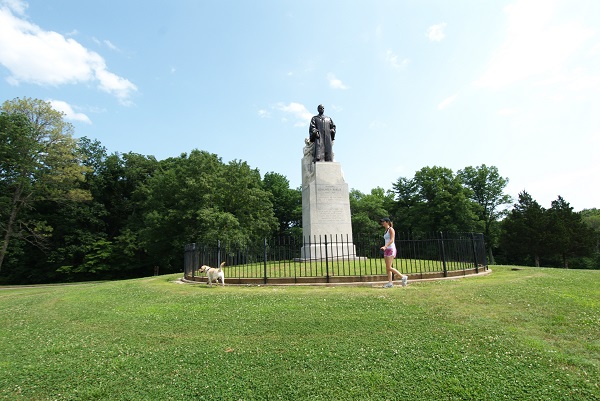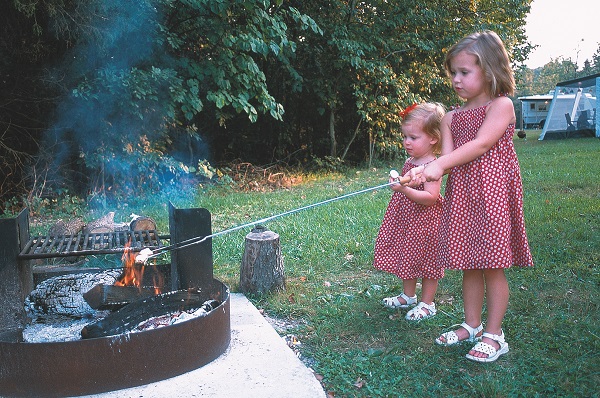at Dr. Edmund A. Babler Memorial State Park
A Green-Space Oasis
 Dr. Edmund A. Babler Memorial State Park, near St. Louis, is one of Missouri's more popular state parks and is an ongoing commemoration of a well-known St. Louis family. The Missouri state park system was barely 20 years old in 1934, when Jacob and Henry Babler presented the state with 88 acres in loving memory of their brother, Edmund, a prominent St. Louis surgeon. An additional 800 acres quickly followed.
Dr. Edmund A. Babler Memorial State Park, near St. Louis, is one of Missouri's more popular state parks and is an ongoing commemoration of a well-known St. Louis family. The Missouri state park system was barely 20 years old in 1934, when Jacob and Henry Babler presented the state with 88 acres in loving memory of their brother, Edmund, a prominent St. Louis surgeon. An additional 800 acres quickly followed.
Jacob Babler, an early crusader on behalf of a state park system for Missouri, was determined that the park dedicated to his own brother would grow and attract people for generations. He campaigned for the use of Civilian Conservation Corps workers to develop the park, and was an almost daily visitor while two companies of 200 men cut roads through the hilly countryside, and built scenic viewpoints, trails and covered shelters. The buildings and bridges, including a massive stone gateway, were made from stones quarried from the area. Twenty-two CCC structures at Babler State Park are now listed on the National Register of Historic Places.
Jacob Babler commissioned a New York sculptor to create a statue of his brother, who was noted for his service to the less fortunate and needy. The life-size bronze statue, still a focal point of the park, was unveiled during the dedication ceremony in 1938. The ceremony, featuring U.S. Secretary of the Interior Harold Ickes as principal speaker, drew more than 3,000 people.
Today, Jacob Babler's dream has evolved into a state park that provides a valuable green-space oasis amid an exploding suburban St. Louis landscape. Hiking, nature study and wildlife viewing are popular activities. Hiking and equestrian trails wind their way through the park's narrow coves, deep sheltered valleys and towering forests. Numerous picnic sites provide outdoor dining opportunities while enjoying the peace and tranquility of the park.
A beautiful feature of the park is its maturing old-growth forests, with two areas being particularly noteworthy. In Cochran Woods, century-old white oak, northern red oak, sugar maple and walnut tower over an understory of flowering dogwood, redbud and pawpaw. Equally lush in this rich upland forest is a ground cover of golden seal, May apple, ginseng, tick trefoil and fern, all of which provide rich habitat for wildlife including many species of birds.
 Bonhomme Creek and Wild Horse Creek form the park's west boundary and are home to orange-throated darters, bleeding shiners and logperch.
Bonhomme Creek and Wild Horse Creek form the park's west boundary and are home to orange-throated darters, bleeding shiners and logperch.
The park offers other types of recreation as well, with a multipurpose court for tennis, volleyball, basketball and other sports. For those wanting to stay overnight, there is a campground with basic, electric and full-hookup sites. Modern restrooms and showers are available during the on-season. Visitors should check the park's camping page for more information about specific amenities.
The River Hills Visitor Center features a stone exterior that harmonizes with the historic CCC architecture in the park. The center houses exhibits interpreting the park's plant and animal life. A walk-through diorama explores the intricate relationships among the flora and fauna that make up the old-growth forest ecosystem. Naturalist staff at the center offer a variety of interpretive programs.
The Jacob L. Babler Outdoor Education Center is a barrier-free resident camp for those with special needs. It provides a full-service, outdoor education environment for organized groups whose members may have particular physical, emotional or dietary requirements.






